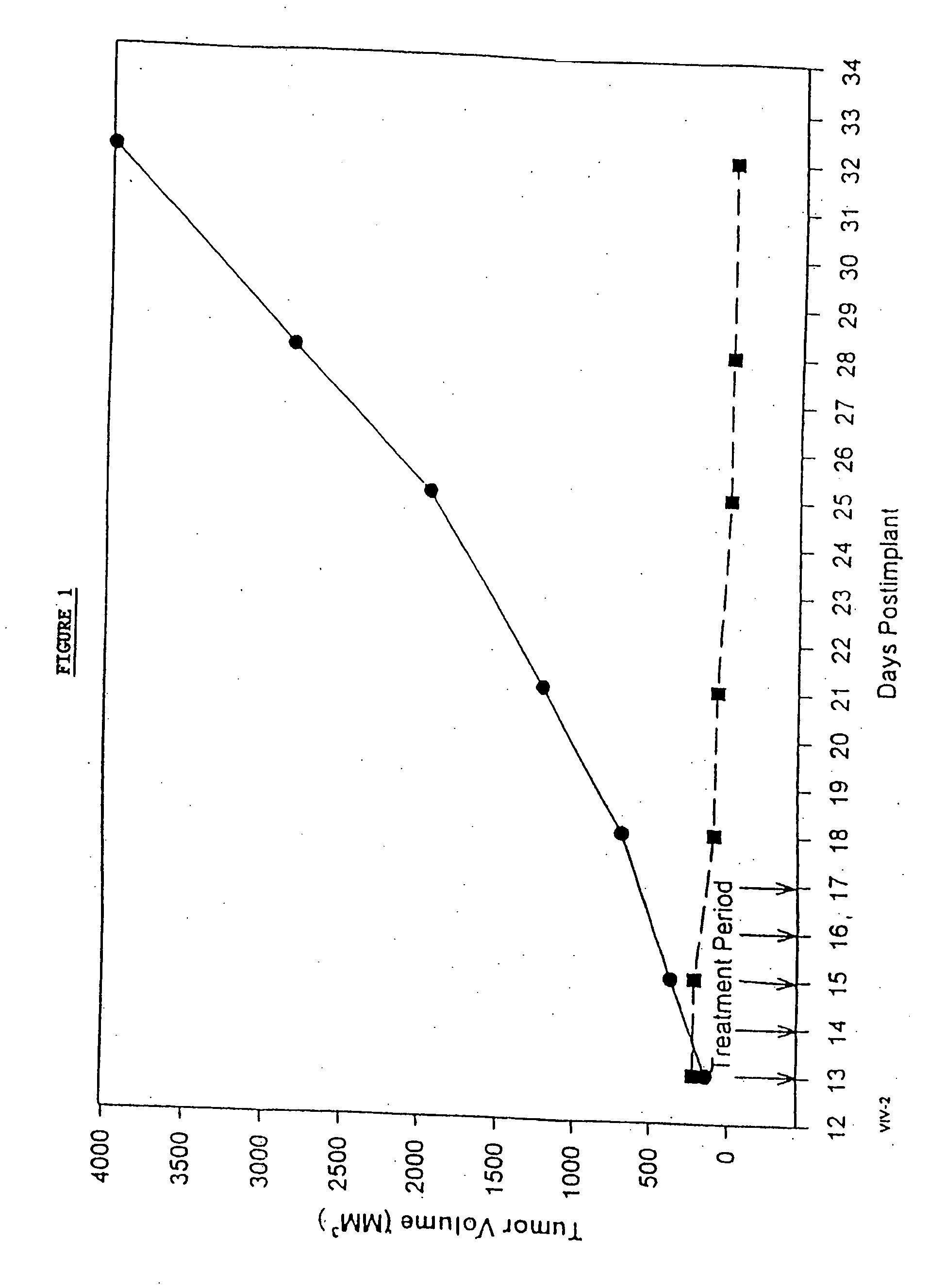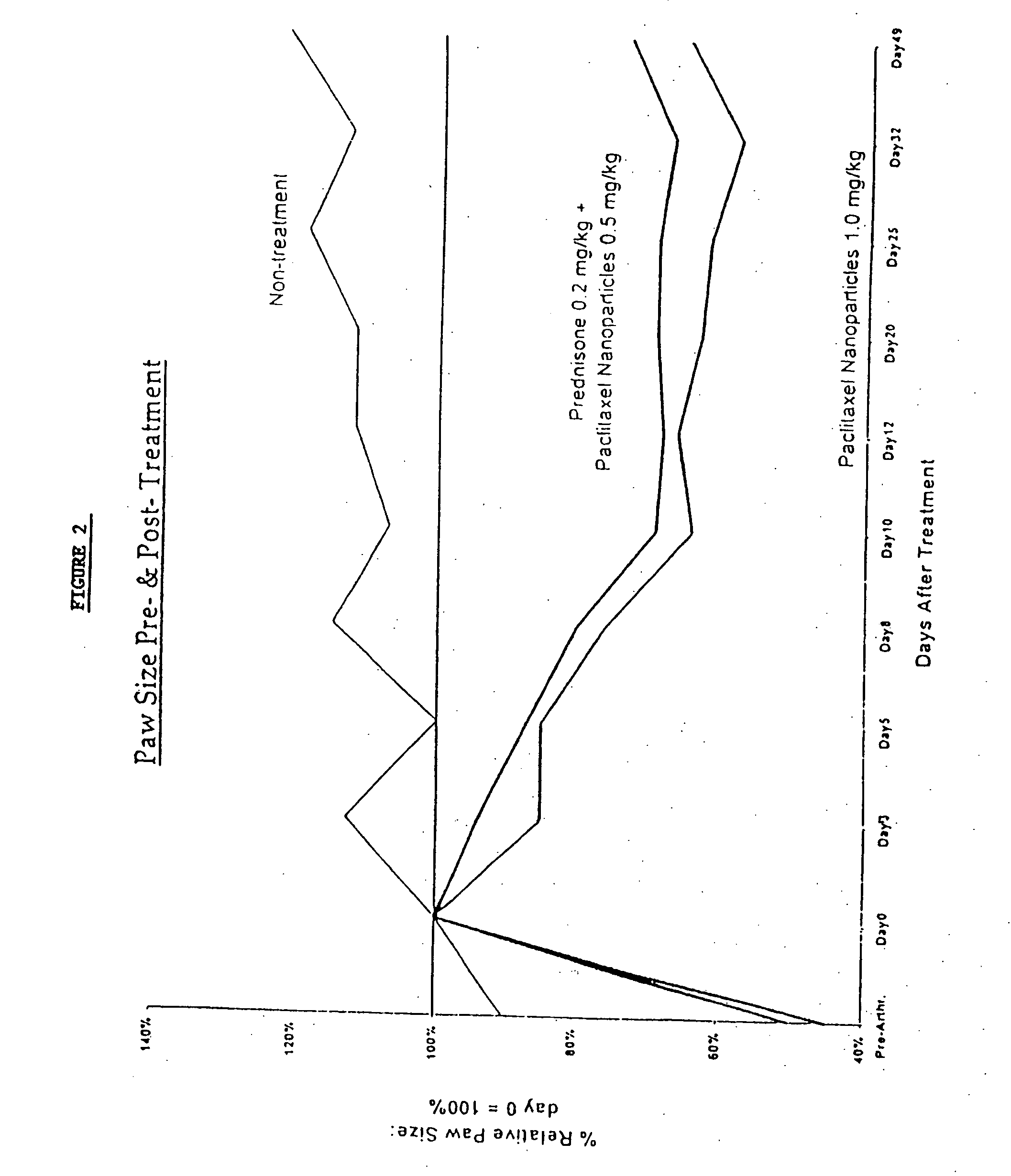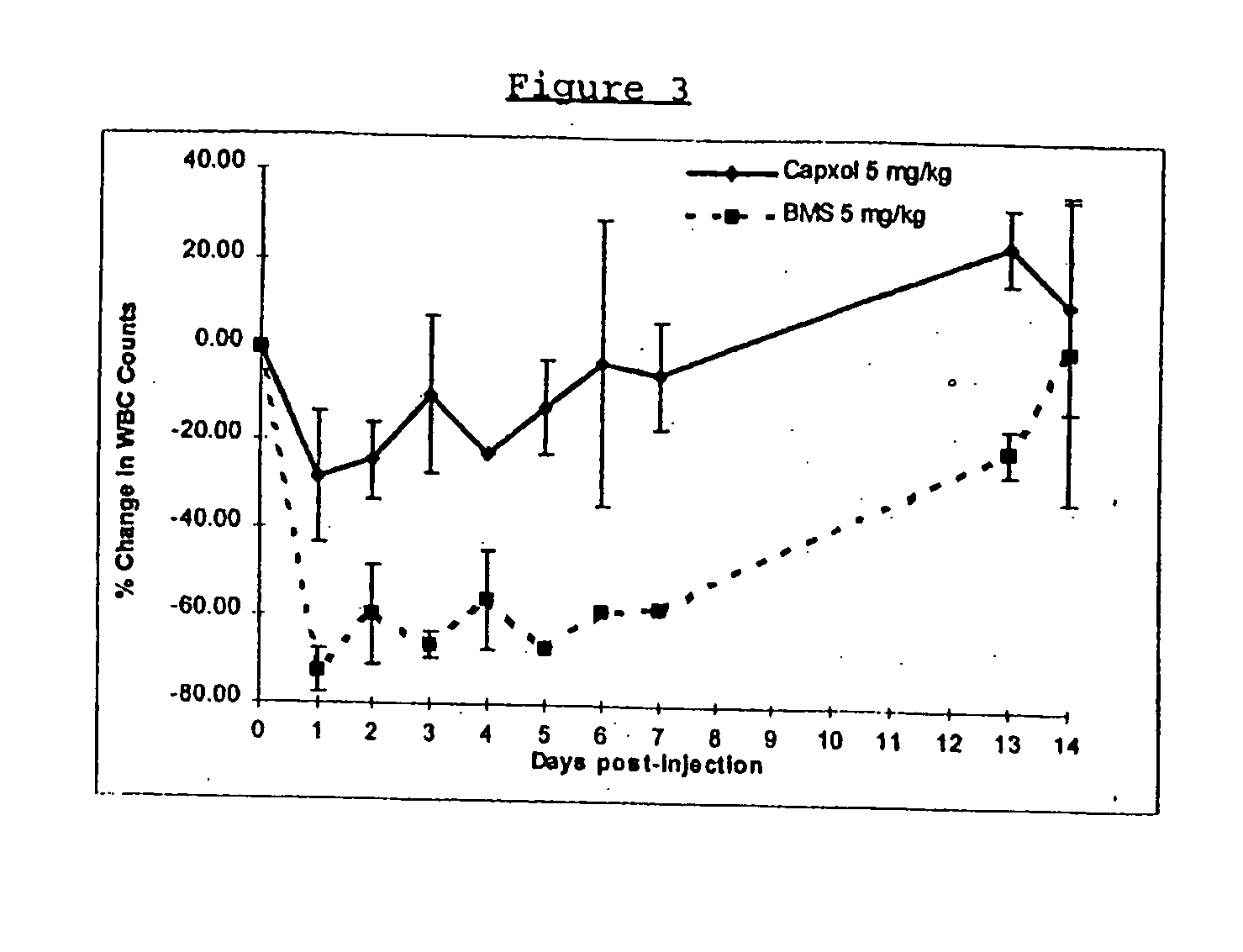Novel formulations of pharmacological agents, methods for the preparation thereof and methods for the use thereof
- Summary
- Abstract
- Description
- Claims
- Application Information
AI Technical Summary
Benefits of technology
Problems solved by technology
Method used
Image
Examples
example 1
Preparation of Nanoparticles by High Pressure Homogenization
[0189] 30 mg paclitaxel is dissolved in 3.0 ml methylene chloride. The solution was added to 27.0 ml of human serum abumin solution (1% w / v). The mixture was homogenized for 5 minutes at low RPM (Vitris homogenizer, model: Tempest I.Q.) in order to form a crude emulsion, and then transferred into a high pressure homogenizer (Avestin). The emulsification was performed at 9000-40,000 psi while recycling the emulsion for at least 5 cycles. The resulting system was transferred into a Rotary evaporator, and methylene chloride was rapidly removed at 40° C., at reduced pressure (30 mm Hg), for 20-30 minutes. The resulting dispersion was translucent, and the typical diameter of the resulting paclitaxel particles was 160-220 (Z-average, Malvern Zetasizer).
[0190] The dispersion was further lyophilized for 48 hrs without adding any cryoprotectant. The resulting cake could be easily reconstituted to the original dispersion by additio...
example 2
Use of Conventional Surfactants and Proteins Results in Formation of Large Crystals
[0191] The following example demonstrates the effect of adding surfactants which are used in the conventional solvent evaporation method. A series of experiments was conducted employing a similar procedure to that described in Example 1, but a surfactant such as Tween 80 (1% to 10%) is added to the organic solvent. It was found that after removal of the methylene chloride, a large number of paclitaxel crystals is obtained having an average size of 1-2 micron, as viewed by light microscopy and under polarized light. The crystals grow within a few hours to form very large needle-like crystals, with a size in the range of about 5-15 micron. A similar phenomenon is observed with other commonly used surfactants, such as Pluronic F-68, Pluronic F-127, Cremophor EL and Brij 58.
[0192] From these results it can be concluded that the conventional solvent evaporation method utilizing conventional surfactants i...
example 3
Use of Conventional Surfactants Alone Results in Formation of Large Crystals
[0193] This example demonstrates that it is not possible to form nanoparticles while using conventional surfactants, without a polymeric core material, with pharmacologically active agents which are soluble in polar, water immiscible solvents (e.g. chloroform).
[0194] 30 mg Taxol is dissolved in 0.55 ml chloroform and 0.05 ml ethanol. The solution is added to 29.4 ml of Tween 80 solution (1% w / v), which is presaturated with 1% chloroform. The mixture is homogenized for 5 minutes at low RPM (Vitris homogenizer, model: Tempest I.Q.) in order to form a crude emulsion, and then transferred into a high pressure homogenizer (Avestin). The emulsification is performed at 9000-40,000 psi while recycling the emulsion for at least 6 cycles. The resulting system was transferred into a Rotary evaporator, and the chloroform was rapidly removed at 40° C., at reduced pressure (30 mm Hg), for 15-30 minutes. The resulting di...
PUM
| Property | Measurement | Unit |
|---|---|---|
| Volume | aaaaa | aaaaa |
| Volume | aaaaa | aaaaa |
| Volume | aaaaa | aaaaa |
Abstract
Description
Claims
Application Information
 Login to View More
Login to View More - R&D
- Intellectual Property
- Life Sciences
- Materials
- Tech Scout
- Unparalleled Data Quality
- Higher Quality Content
- 60% Fewer Hallucinations
Browse by: Latest US Patents, China's latest patents, Technical Efficacy Thesaurus, Application Domain, Technology Topic, Popular Technical Reports.
© 2025 PatSnap. All rights reserved.Legal|Privacy policy|Modern Slavery Act Transparency Statement|Sitemap|About US| Contact US: help@patsnap.com



